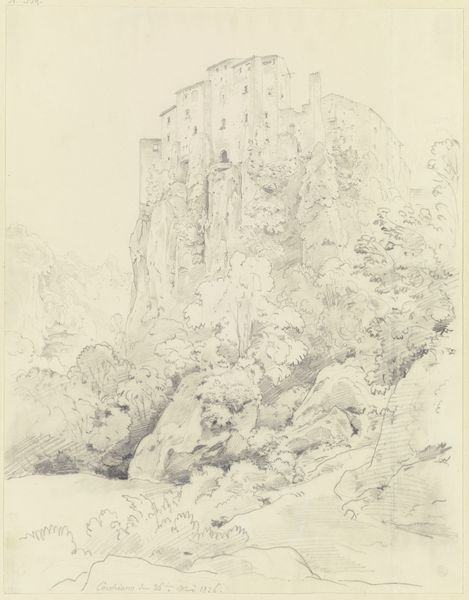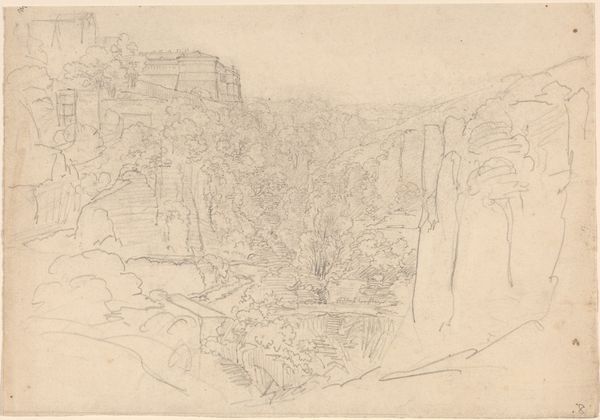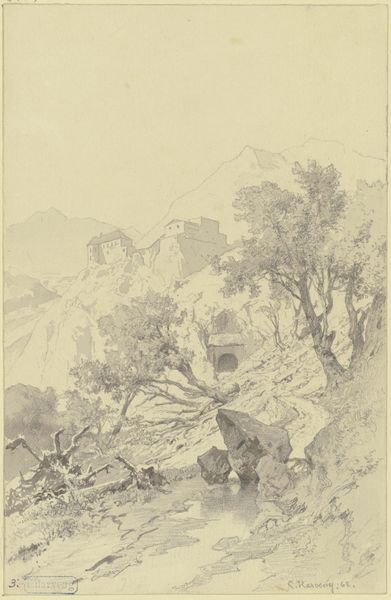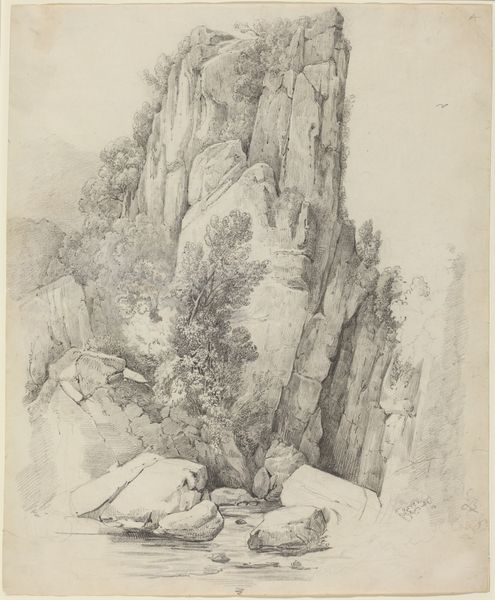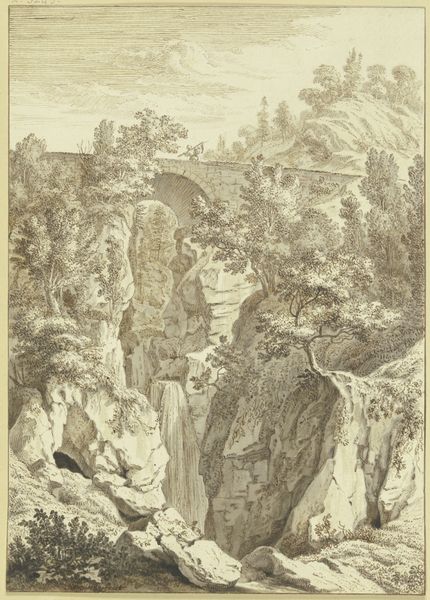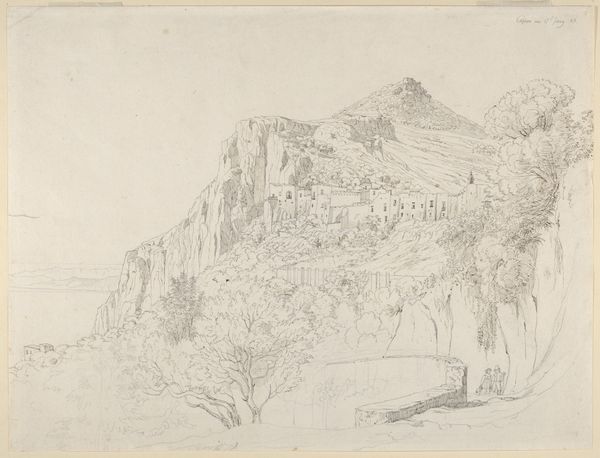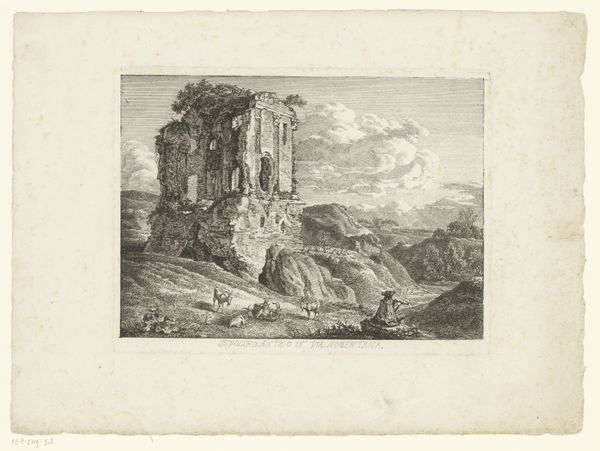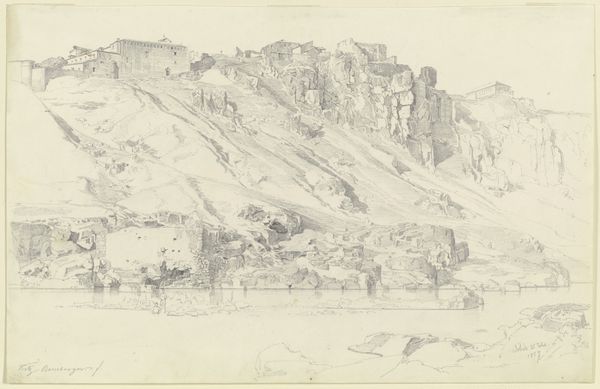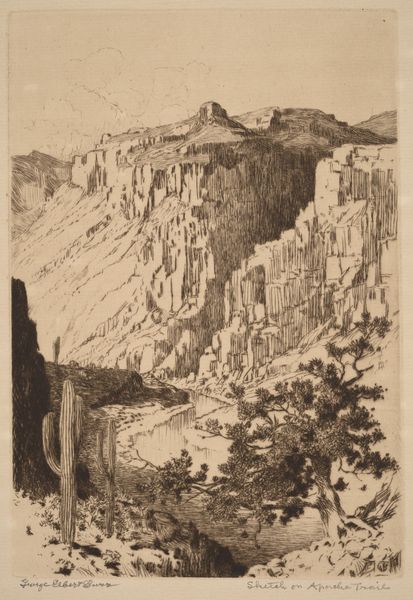
drawing, pencil, architecture
#
drawing
#
landscape
#
romanticism
#
pencil
#
history-painting
#
architecture
Copyright: Public Domain
Curator: This is Friedrich Metz’s "Kybach Castle," created around 1849. It's a pencil drawing currently held at the Städel Museum. Editor: It's very delicate; the soft, light pencil work creates an airy and dreamlike quality. I'm immediately drawn to the intricate details of the castle ruins perched so precariously on the mountainside. Curator: Yes, Metz situates the castle, a vestige of power, quite vulnerably within the overwhelming scope of nature, which fits neatly within the Romantic tradition's concern with the sublimity of nature and humanity's place within it. Consider the socio-political climate in Germany at the time. The revolutions of 1848, for example, highlight an interesting dialogue between past authority and present struggles. Editor: That's fascinating. From my perspective, it's interesting how Metz employs a limited tonal range—various gray pencil hues create a unified, almost monochromatic image. The detailed articulation of textures—the rough stone of the ruins, the verdant foliage—almost contrasts the castle to make it feel aged and imposing but transient as well. Curator: And remember, castles were potent symbols. Often employed within history painting, they signified not just power, but also the weight of history and tradition in the face of burgeoning modern, and in this case, democratic ideals. Metz is making a subtle commentary. Editor: It's such a captivating piece—the way the linear details contrast with the natural setting...one can also sense the passage of time etched within the decaying architecture. Curator: It truly provides a visual study into the anxieties and artistic expressions prominent during a turbulent era in German history. Editor: I will definitely have to look at more work by Metz now; thanks for illuminating all that!
Comments
No comments
Be the first to comment and join the conversation on the ultimate creative platform.
